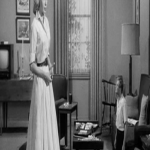Dust-Clouds and Dustbins: Should There Be a Regularity Requirement for Dust Exposure When Defining ‘Substantial’ Under Section 63 (1) Factories Act 1961?
This article originally appeared on the PI Brief Update website
 In cases where an employee is exposed to asbestos, a claim may be brought under the common law as well as pursuant to duties owed by the employer under various regulations and legislation. One example of such legislation is s.63 (1) Factories Act 1961, which provides that:
In cases where an employee is exposed to asbestos, a claim may be brought under the common law as well as pursuant to duties owed by the employer under various regulations and legislation. One example of such legislation is s.63 (1) Factories Act 1961, which provides that:
“In every factory in which, in connection with any process carried on, there is given off any dust or fume or other impurity of such a character and to such extent as to be likely to be injurious or offensive to the persons employed, or any substantial quantity of dust of any kind, all practicable measures shall be taken to protect the persons employed against inhalation of the dust or fume or other impurity and to prevent its accumulating in any workroom…”
In McDonald v National Grid Electricity [fusion_builder_container hundred_percent=”yes” overflow=”visible”][fusion_builder_row][fusion_builder_column type=”1_1″ background_position=”left top” background_color=”” border_size=”” border_color=”” border_style=”solid” spacing=”yes” background_image=”” background_repeat=”no-repeat” padding=”” margin_top=”0px” margin_bottom=”0px” class=”” id=”” animation_type=”” animation_speed=”0.3″ animation_direction=”left” hide_on_mobile=”no” center_content=”no” min_height=”none”][2014] UKSC 53 the Claimant had worked as a lorry driver, frequently entering a power station to make collections, during which time he was exposed to asbestos. The Supreme Court considered s.69 (1) in depth, such as how to approach the need for a claimant to be a “person employed” and the meaning of “in connection with any process”. These two particular points are beyond the scope of this piece.
Lord Kerr, handing down the majority judgement, shed light on the approach to the meaning of ‘dust’ under s.63 (1). It was wrong to interpret s.63 (1) as requiring an employee to be exposed to a “substantial quantity of injurious dust”. This would be to conflate two separate and alternative limbs contained within the subsection.
Limb one, Lord Kerr stated, is concerned with exposure to ‘injurious dust’, irrespective of whether the quantity of that dust is substantial. On the other hand, limb two required a ‘substantial exposure to dust’, irrespective of whether that type of dust is known to be injurious.
Only if the answer is ‘yes’ to either limb will the court turn to asking if there were practicable measures the employer should have taken to protect against the exposure. If no such steps were taken, the employer is liable under s.63 (1).
The focus of this piece is the approach the law should take to defining ‘substantial’ under limb two of s.63 (1). It is argued that because the intended ambit of limb two is broad, s.63 (1) should be kept within normatively acceptable bounds by requiring ‘substantial’ to mean that any exposure exhibited a degree of regularity. One-off emissions resulting in dust-clouds should not per se fall within the definition of ‘substantial’.
Limb 1 vs. Limb 2 – a normative difference?
It is worth asking why there is a dichotomy present in s.63 (1). Is it not simpler to conflate the two limbs, requiring a ‘substantial quantity of injurious dust’? Aside from the textual injustice of that approach, there is an important normative distinction to be made.
While limb one is concerned with dust known to directly harm an individual (a specific risk), such as asbestos, the ambit of limb two is a wider one, aimed at reducing general levels of dust in the workplace, with a desire to guard against the long-term risks of dust more generally. For example, one aim is to reduce long-term exposure to dust whose risks are currently unknown but could be revealed as harmful in the future. Limb two is not therefore concerned with freezing time to look at particular exposures to dust by specific individuals.
Limb one is aimed at protecting individuals from the specific risks of injurious dusts. This specificity to an individual means that an employer can only be liable where, in light of the state of knowledge at the time of exposure, it was reasonable for an employer to foresee that exposure to that specific type of dust would cause that particular employee injury, so as to require the employer to take protective action to protect them.
On the other hand, limb two’s aims are beyond the concern of any particular individual. Limb two therefore does not require any notion of reasonable foreseeability or state of knowledge to be satisfied.
McDonald supports thisanalysis in two key ways. First, the court unanimously agreed that the meaning of ‘substantial’ calls for a purely quantitative assessment. This is because the aim of limb two is to keep general workplace dust levels down. It does not involve looking at the nature of the dust itself nor the foreseeability of injury to an individual.
Second, the court concluded the employer’s duty under limb two is not dependent on the quantity of dust being considerable at the moment of inhalation. What is crucial to the meaning of ‘substantial’ is the quantity of dust in the workplace at any given time dust is released, not the time at which any inhalation occurs. This confirms that limb two is not concerned with the individual.
The majority held that there was insufficient evidence that the exposure in this case was substantial. Evidence of a ‘visible dust cloud’ was not enough. It was not clear such clouds were the only way of assessing dust levels at the time of exposure. This supports the conclusion that irregular dust-clouds, however visible, should not provide a basis for concluding an exposure was ‘substantial’. Stricter scientific approaches to quantification should be pursued, especially because limb two is not about any specific encounter between an individual and a visible dust-cloud.
If limb two aims to keep general workplace dust levels down, it is illogical to include highly irregular dust-clouds or one-off/chance exposures within the ambit of ‘substantial’. Any exposure should take place with a non-negligible degree of frequency and/or regularity. Only then can limb 2 serve its normative function of keeping workplace dust levels low.
As limb one already deals with claimants who are individually exposed to specifically injurious dust concentrations, there is no need for limb two to include infrequent but specific exposures. ‘Substantial’ should require a a minimum degree of regularity or frequency.
Moreover, limb two should not be used as an escape valve for claimants who have been unable to prove that an employer could foresee that a particular exposure to a specific dust would result in injury to the claimant. If a claimant could then rely on those same specific exposures to find a breach under limb two, without also showing some degree of frequency or regularity in the levels of workplace dust, that would render limb 1 superfluous.
Decisions since McDonald
Smith v Portswood [2016] EWHC 939 (QB):
A former employee worked as a joiner for the defendant employer between 1973 and 1977. On the evidence, it was held that very occasionally the employee was required to cut and trim asbestos sheets. The exposure to asbestos would take place for around 10 minutes. The rarity of such occasions and the nature of the activity meant that the concentrations of asbestos exposure did not exceed the Health and Safety Executive’s permitted thresholds contained in Technical Data Note 13 (“TDN 13”).
This fact the TDN 13 thresholds were not exceeded meant that under limb one of s.63 (1), as well as under the common law, the employer could not have foreseen that the exposure was likely to be injurious to the Claimant. The Claimant was left to rely on limb two of s.63 (1), which does not require foreseeability.
In considering if the quantity of dust was ‘substantial’, the witness evidence stated that dust would “fly up into the air”. However, the judge held that much of the dust was removed using an extraction system so it was unlikely that dust-clouds would form. Further, given that there was no reliable method for measuring concentrations of dust, there was no basis on which to conclude the exposure was ‘substantial’ under s.63 (1). Essential considerations of both time and frequency of the exposure were missing.
This is a welcome endorsement of the need for a quantitative approach to the term ‘substantial’ as set out in McDonald. It appears that, as in McDonald, the absence of scientific quantitative evidence led to the conclusion that ‘substantial levels’ of dust had not been proven.
It appears the rarity of the exposures buttressed the judge’s conclusion that exposure was not substantial. This emphasis on the lack of frequency is the correct approach.
Any suggestion that the conclusion of ‘not substantial’ was based on it not being proven that a dust-cloud was visible should be rejected. After all, in McDonald the visibility of a dust-cloud was not decisive. It is frequency and regularity that should count.
The case also shows how a claimant was unable to circumvent its inability to establish liability under limb one (as foreseeability was not proven) by invoking limb two, when they were unable to properly quantify the levels of dust in the workplace.
Prater v British Motor Holding [2016]WL 03947474:
In this case the former employee had been exposed to asbestos while working as a panel beater between 1958 and 1975. The judge in this case adopted the two limb approach to s.63 (1), finding that both limbs were satisfied.
The evidence was that 30-35% of the employee’s work involved exposure to asbestos. The dust was described as being all over his clothing, which was not washed more than once a week. Further, there were no shower facilities. No steps were taken to reduce inhalation or accumulation of asbestos dust.
The judge held that when considering the meaning of ‘substantial’ under limb two, it was a factual question for the trial judge, depending on the evidence in the particular case. He found that the quantity of dust exposure during the Claimant’s employment was substantial. It was “the only quantitative assessment that can be made based on a common sense view of that evidence”. He noted that the dust given off was in such quantities “as to be visible in the air, including as a haze or smog”. The dust-cloud has made yet another irrelevant judicial appearance.
It is suggested that once again the key to this decision was the frequency of exposure. 30-35% of the employee’s work involved exposure to asbestos. Putting limb one aside, there was a frequent and regular high level of dust in the defendant’s workplace, with no steps taken to reduce it.
There is another point in Prater that supports the regularity requirement posited in this piece. The judge held that it did not matter that a quantity of asbestos found before the publication of TDN 13, which was also lower than the concentrations prescribed in TDN 13, could be substantial. This may be surprising but it is surely right. TDN 13 is used as a benchmark of foreseeability under limb one. It therefore does not come into play under limb two.
Substantial dust levels are not marked by any particular concentration of dust. Instead, the focus is on the regularity and frequency with which dust appears in the workplace. The normative underpinning is that an employer should seek to reduce this long-term dust level. Whether a particular individual is exposed to levels of asbestos which are higher than TDN 13, or not, is beside the point. As the judge put it, if an employer does not know whether there is any safe level of exposure, it makes perfect sense to say that the exposure must be reduced to the maximum extent practicable. Under limb two, the focus is on the steps of the employer, not any specific exposure of an employee.
Warne v Vinters-Armstrong Limited [2016] EWHC 1971 (QB);
Most recently, in this case the employee was exposed to asbestos dust during the course of his employment over 50 years ago. The single issue in the case was “how much asbestos the Claimant had been exposed to?” If it exceeded 25 f/ml years than the employer would be in breach of its common law duties to the employee. S.63 (1) was therefore not directly relevant.
However, it is interesting to note what the result should have been had a claim been brought pursuant to s.63 (1). On the facts, the Claimant had been exposed to asbestos dust when he tipped over a dustbin of asbestos to douse any fires that begun on the machine he was manning. This only occurred around 9 times a year. When the fires were doused, large dust-clouds would form which would drift away from the employee as they rose with the heat of the flames.
The judge concluded that the quantity of asbestos exposure was insufficient to create a foreseeable risk of injury, so that the employer was not in breach of its duty of care. This would mean that limb one of s.63 (1) would also not apply, as the foreseeability test was not satisfied. Would a limb two argument succeed? Despite the presence of a visible asbestos dust-cloud (which would quickly drift away), the important point is that the exposures were infrequent and irregular.
It may be argued that Warne represents a tough, middle of the road case. Difficult line drawing may need to take place to determine if nine instances of exposure are frequent enough to be ‘substantial’ under limb two of s.63 (1). It may be argued that nine times per year is not frequent enough to require the employer to take reduction measures. Limb two is blind to whether the dust is asbestos or any other dust. If dust from outside blew through the window nine times a year, would the law expect the employer to take dust-reducing measures? The bar must surely be higher.
Conclusion
In the context of asbestos claims it is very easy to conflate common law duties with regulations and legislation. There is a great deal of overlap between the different tests required under different heads of claim. Under s.63 (1) Factories Act 1961, there are two separate limbs. The first is not concerned with quantity. Its aim is to target specific cases where particular individuals have been affected by injurious dusts. Foreseeability of the employee’s injury is therefore key. In contrast, the normative importance of limb two is to encourage employers to keep workplace dust levels down. Quantity is key. As part of this quantitative assessment, it is essential to factor in frequency and regularity into the definition of the term ‘substantial’. This is far more important than the visibility of any dust-cloud. Without any regularity, it cannot be expected that an employer should take steps to reduce their dust levels. To hold otherwise is to ignore the function of limb two of s.63 (1).
Further commentary on this topic is provided by the authors at the Pro Vide Law website.
Charles Feeny & Sammy NannehContributing Editors at Pro-Vide Law[/fusion_builder_column][/fusion_builder_row][/fusion_builder_container]


